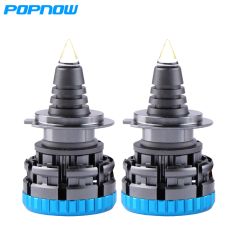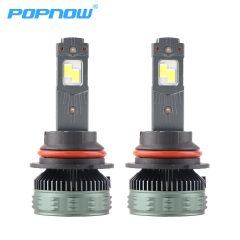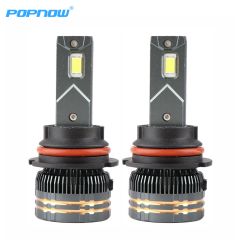Vehicle manufactures are always looking for ways to use technology to improve their offerings. Right now, many manufacturers are interested in advancements in lighting. In the past, halogen headlights were available on all vehicles. Now, manufacturers are replacing halogen headlights with LED and HID Xenon headlights. You can’t help but wonder if LED lights are the best option out there, as well as the pros and cons of this lighting choice. Let’s dig in, so you’ll know if LED headlights are right for you.
The Pros of LED Headlights
You probably wonder if LED headlights are suitable for cars. These headlights have lots of benefits that you should consider. When you get an LED light for your vehicle, you can expect it to last a lot longer than halogen headlights. An LED bulb lasts about 15 times longer than a halogen bulb, so that’s one reason to make the switch.
LED lights are also energy-efficient, vibration-resistant, and shockproof. That means they are very durable.
They are also quite bright. It’s much easier to see when you have LED lights. It can feel like you have your high beams on when you’re diving with low beam headlights with LED bulbs.
Cons of LED Headlights
The glare associated with LED headlights is one of the biggest disadvantages of this technology. The glare can get so bad that it could affect other people on the road. Experts also worry that it can cause long-term retina damage.
Also, LED headlights are more expensive than halogen lights. Of course, you don’t have to replace them as often, so you can save money in the long run.
It’s worth noting that some drivers complain about performance issues in inclement weather. That could cause you to have trouble seeing when driving in the rain.
 What Is the Difference Between HID and LED Headlights?
What Is the Difference Between HID and LED Headlights?
Now that you know the pros and cons of LED lights, it’s time to look at HID vs. LED headlights. Both are legal, so you add either to your vehicle. Which is the right choice, though?
Let’s look at the difference between the two:
-
LED headlights use electrons and diodes to create light. HID headlights are just extremely bright versions of standard lightbulbs.
-
HID headlights have a farther reach, and the light is brighter. That’s not necessarily a good thing, though. This causes more glare, putting other drivers at a higher risk.
-
It takes HID lights about 30 seconds to reach full brightness. While this isn’t a problem for some drivers, others cannot wait for headlights to warm up.
-
HID bulbs are fragile. They could shatter at some point. While it’s a matter of preference, many people who compare HID vs. LED headlights end up preferring LED technology.
Test the Technology Before Making a Choice
It’s smart to test different headlight options before you switch your lighting system. You want a balance between seeing on the road and preventing harsh glare. Then, everyone can stay safe when you’re driving.






